An Oscar-Winning Director Has Given This Rome Luxury Hotel a Kaleidoscopic Makeover
A legendary 16th-century palazzo has been transformed into a technicolored, retro-futuristic utopia by the imaginative eye of one of Hollywood's most-talked-about authors, Challengers' Luca Guadagnino
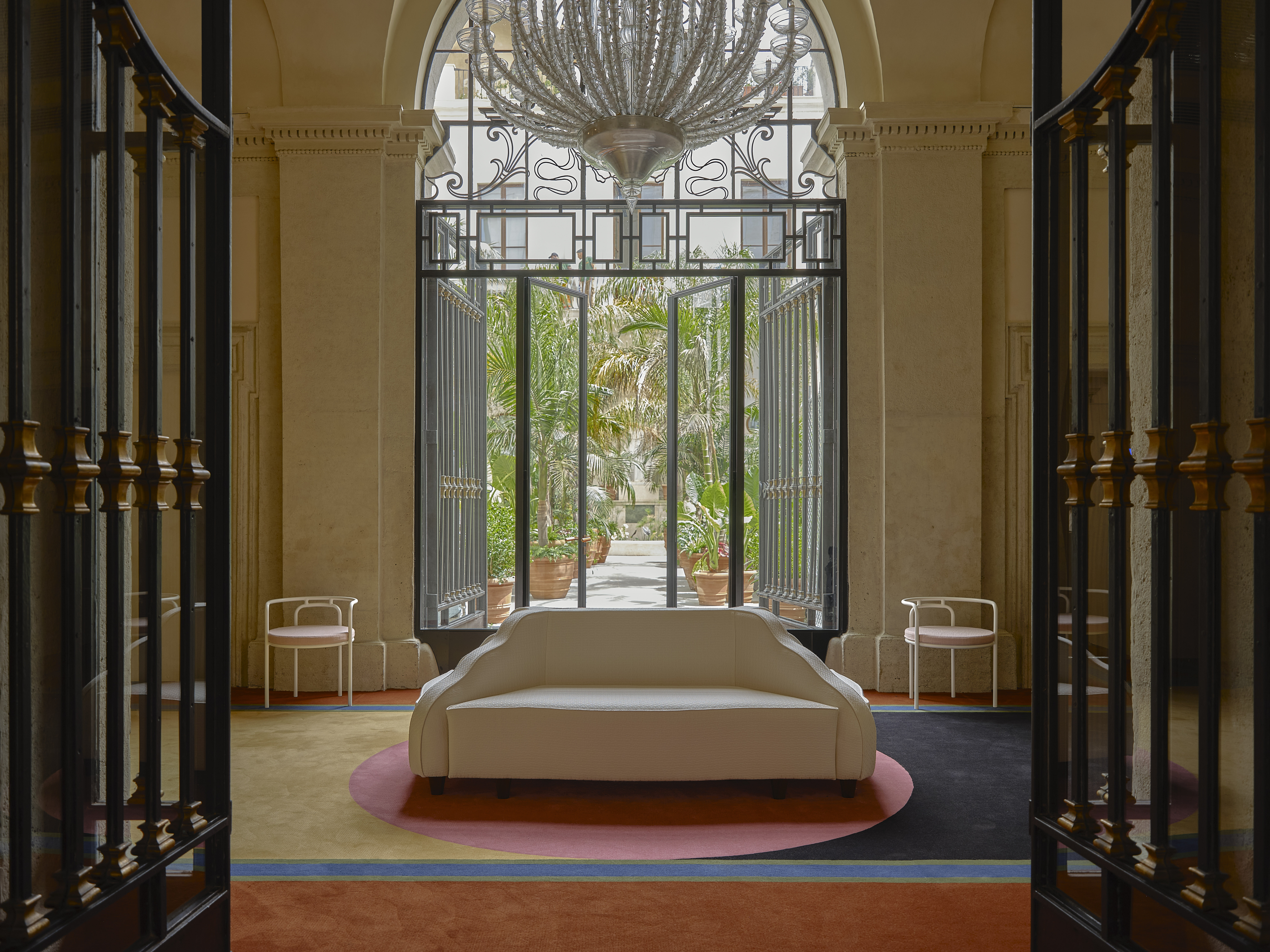
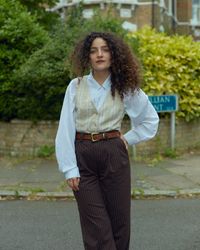
I feel an unexpected sense of familiarity when, after jumping out of my taxi on Rome's ever-trafficked Via del Tritone, minutes away from the Trevi Fountain, I reach the historical stone façade of Palazzo Talìa. The first hotel designed by the studio of Oscar-winning director Luca Guadagnino, the project saw the Collegio Nazareno — a school for underprivileged children (and later for the sons of the elite) founded in 1622 by Cardinal Michelangelo Tonti, and active through 1999 — transformed into a technicolored, retro-futuristic home for the inspired traveler.
Reopened this August by the Federici family of real estate firm Gruppo Fresia following a four-year renovation, Palazzo Talìa looks nothing like the schools of my Italian childhood. Dating from the 16th century, the building's origins as a residence for the noble and clerical powers of the Eternal City, and past as its oldest scholastic institution, are written all over its sculpted-in-lions entrance and frescoes- and marbles-filled rooms. Yet, whether because of the presence of the Collegio's sign and flagged front balcony, or due to long corridors, vertiginously tall ceilings, and plaques-adorned staircases, it still reminds me of them, and for a reason.
A 16th-Century Illustrious Building, Revived
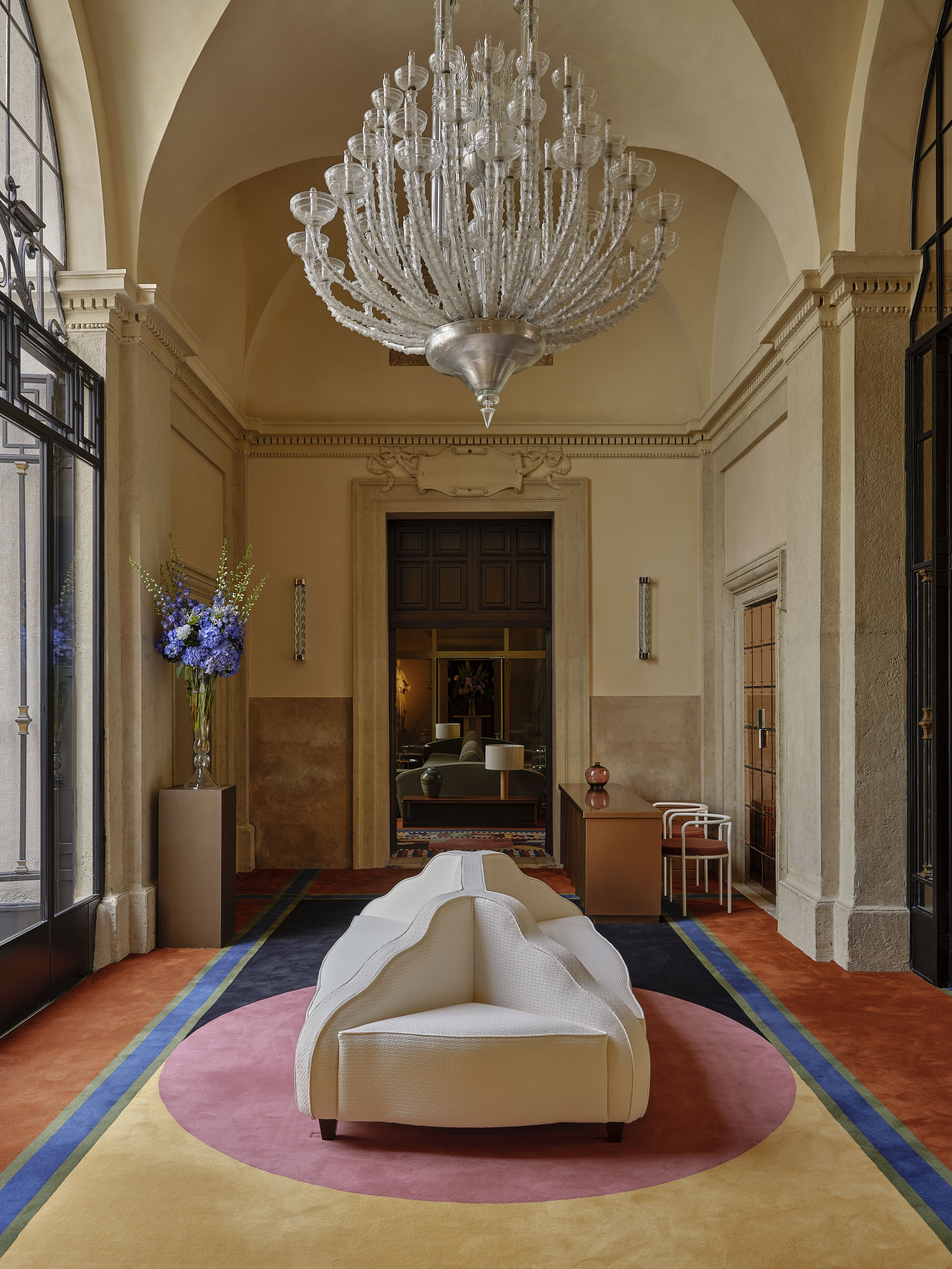
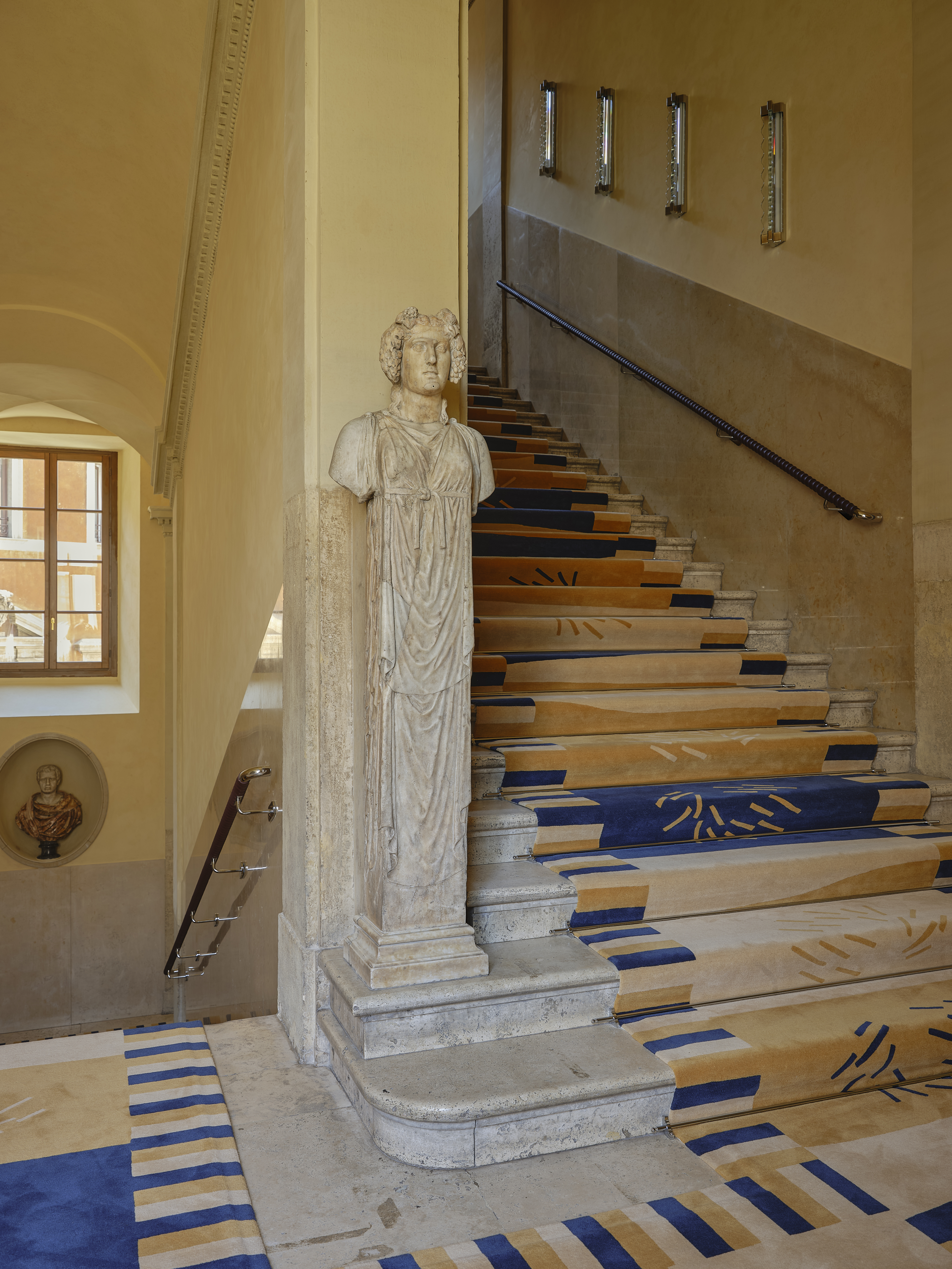
One of the best Rome hotels for interior innovation, "the concept behind Palazzo Talìa was to preserve the palace's roots without intervening on its original structure," Ginevra Santaniello, Operations Manager at the Small Luxury Hotels' 5-star boutique stay, tells me during the tour that wraps up my sojourn at the property. To acknowledge the cultural relevance of the Collegio Nazareno, which formed prestigious politicians, cardinals, and diplomats, "every aspect of it, starting from its walls, was maintained and restored to its former glory," she says. "Because history shouldn't be erased, but valorized."
Comprising 25 individually crafted rooms realized by MIA Home Design Gallery's Marianna Lubrano Lavadera in collaboration with Laura Feroldi Studio, alongside one signature terrace suite signed by studiolucaguadagnino, Palazzo Talìa inhabits a dimension of its own. Beyond the hotel's grand arched doorway, the buttery hue of its pristinely preserved columns, capitals, and stone architectural elements embraces the filmmaker's vivid design universe in a centuries-spanning artistic dialogue.
Just like in the meticulous sets Guadagnino creates for his movies, from the idyllic Italian countryside villa of his Timothée Chalamet-starring 2017 success Call Me By Your Name to the eerie bareness of the transitory homes featuring in his 1980s-set, cannibals-filled romantic horror film Bones and All, here too nothing is left to chance. "Every light, coffee table book, vase, and artwork present in the space, as well as the floral design," adds the Operations Manager, "was curated by him to tell a story."
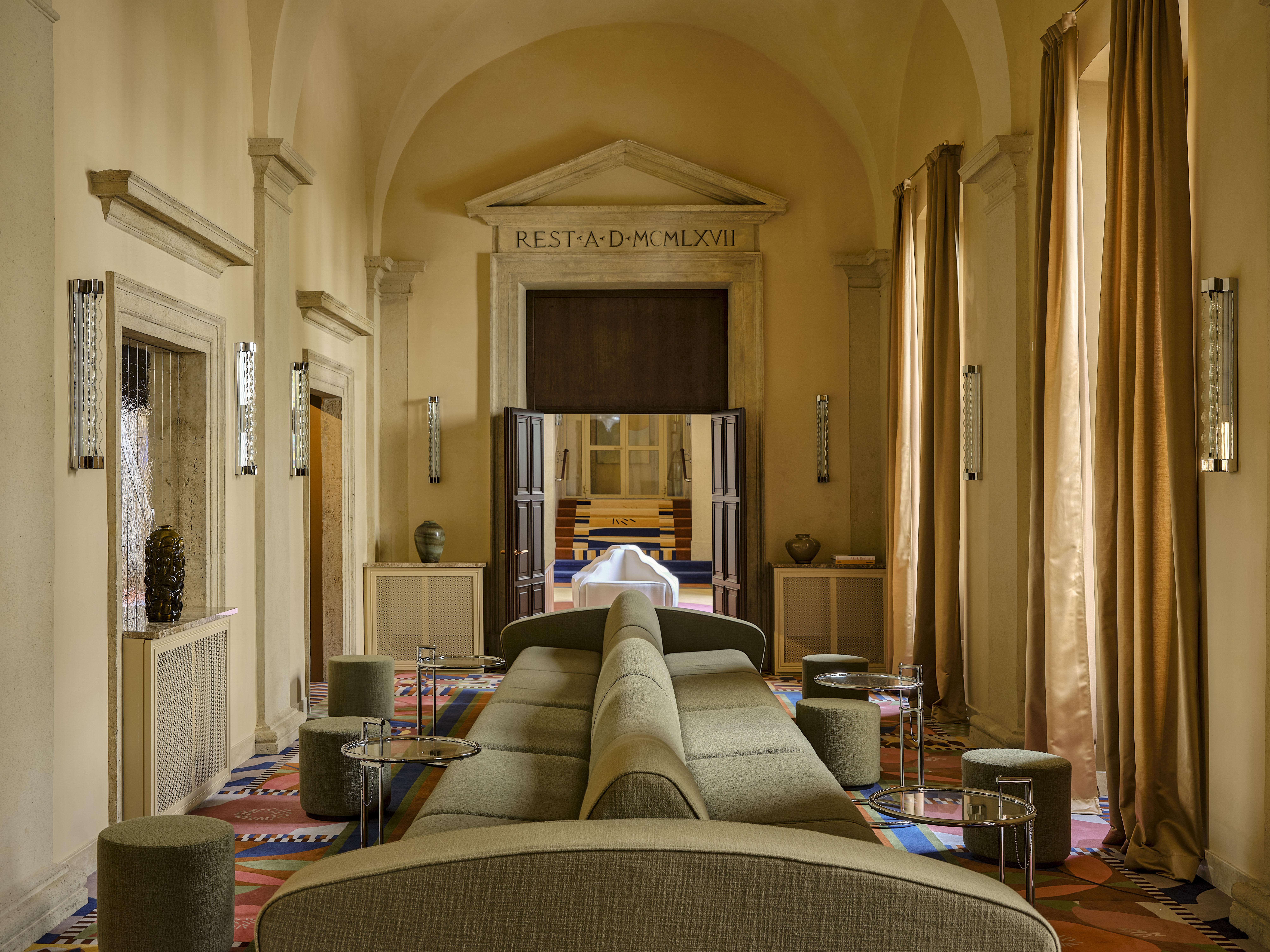
Palazzo Talìa's main hall
Across the stay's texturally decorated spaces — including a 248-square-meter reception room with frescoed ceilings by Baroque painter Gaspare Serenario, the Aula Magna ("the great hall"), and a Roman baths-inspired spa — a cinematic range of pastels takes center stage. "Despite their modern essence, all colors of the project hint at the antique hues of the palace," Santaniello explains, pointing to the pale pinks and greens that recur throughout the building. Developed in tandem with Rome's Superintendence for Cultural Heritage, the hotel amplifies the palace's splendor, ingeniously bringing its stuccoed reliefs and art-plastered vaults into the contemporary.
Characterized by chromatism, or the juxtaposition of several contrasting shades to achieve a sensory-pleasing effect, geometry, and craftsmanship — studiolucaguadagnino's three overarching principles — Palazzo Talìa's interiors are draped in the finest upholstery, with bespoke Murano glass chandeliers, scalloped sconces, and quirky pop accents bringing the building to life. 1970s-style oversized sculptural sofas and armchairs populate the stay's communal areas, while sweeping rugs, conceived by Nigel Peake in collaboration with the director, guide guests along a hypnotizing labyrinth of floral motifs and abstract shapes, all charged with the hotel's distinctive palette. Meanwhile, in the inner courtyard imagined by local landscape architect Blu Mambor, an urban "oasis" awaits.
The Livingetc newsletters are your inside source for what’s shaping interiors now - and what’s next. Discover trend forecasts, smart style ideas, and curated shopping inspiration that brings design to life. Subscribe today and stay ahead of the curve.
Palazzo Talìa: A Spirited Roman Retreat
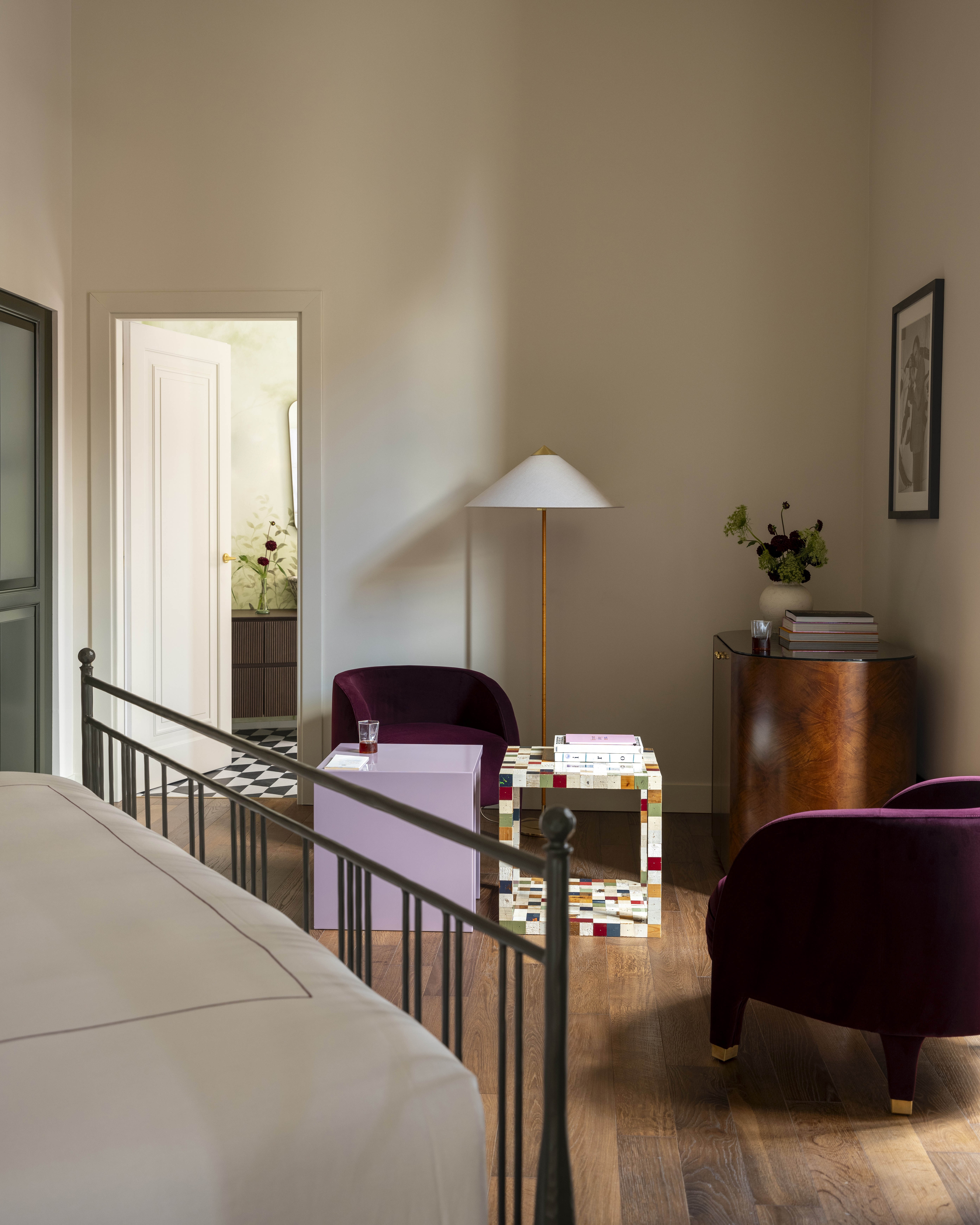
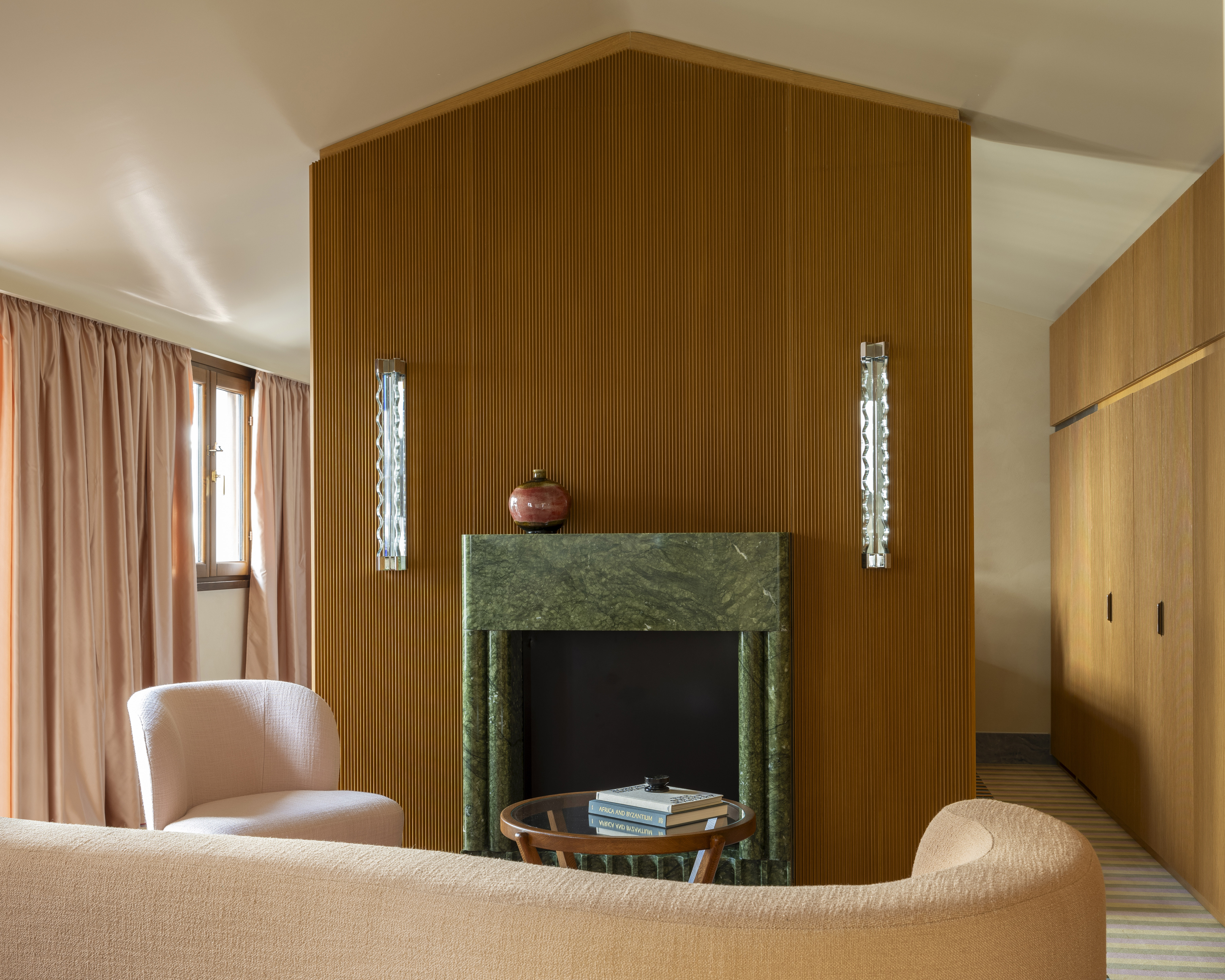
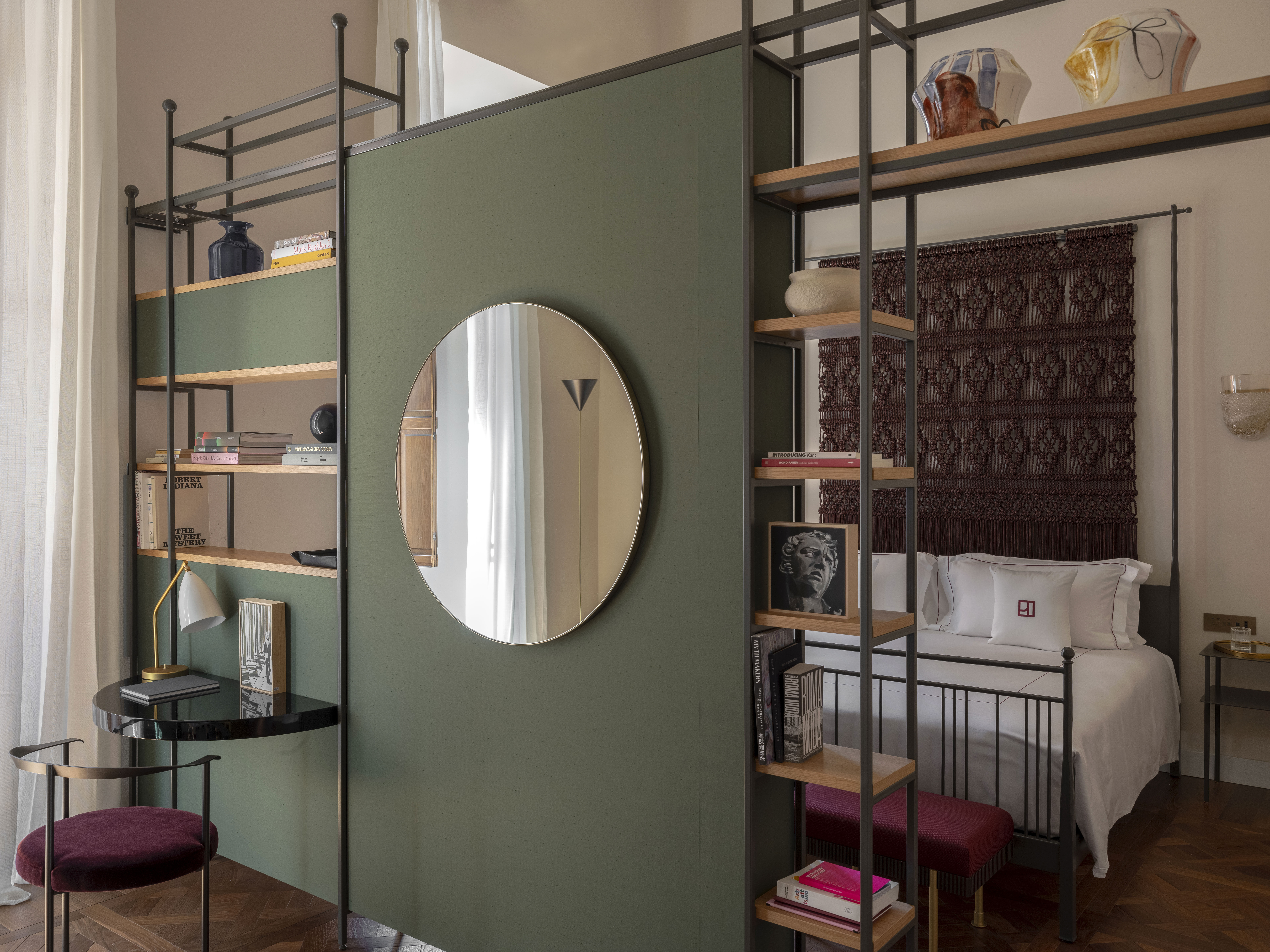
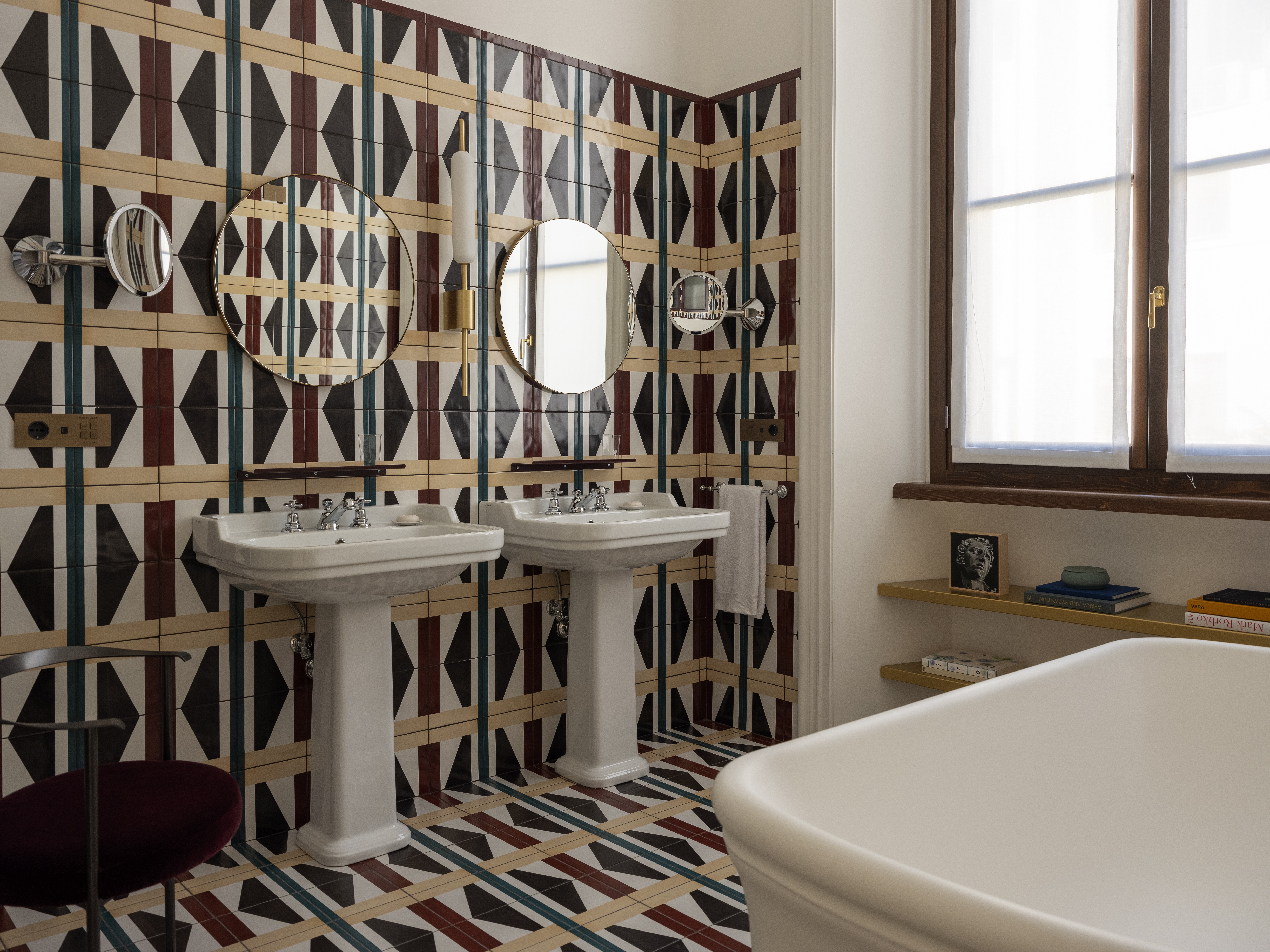
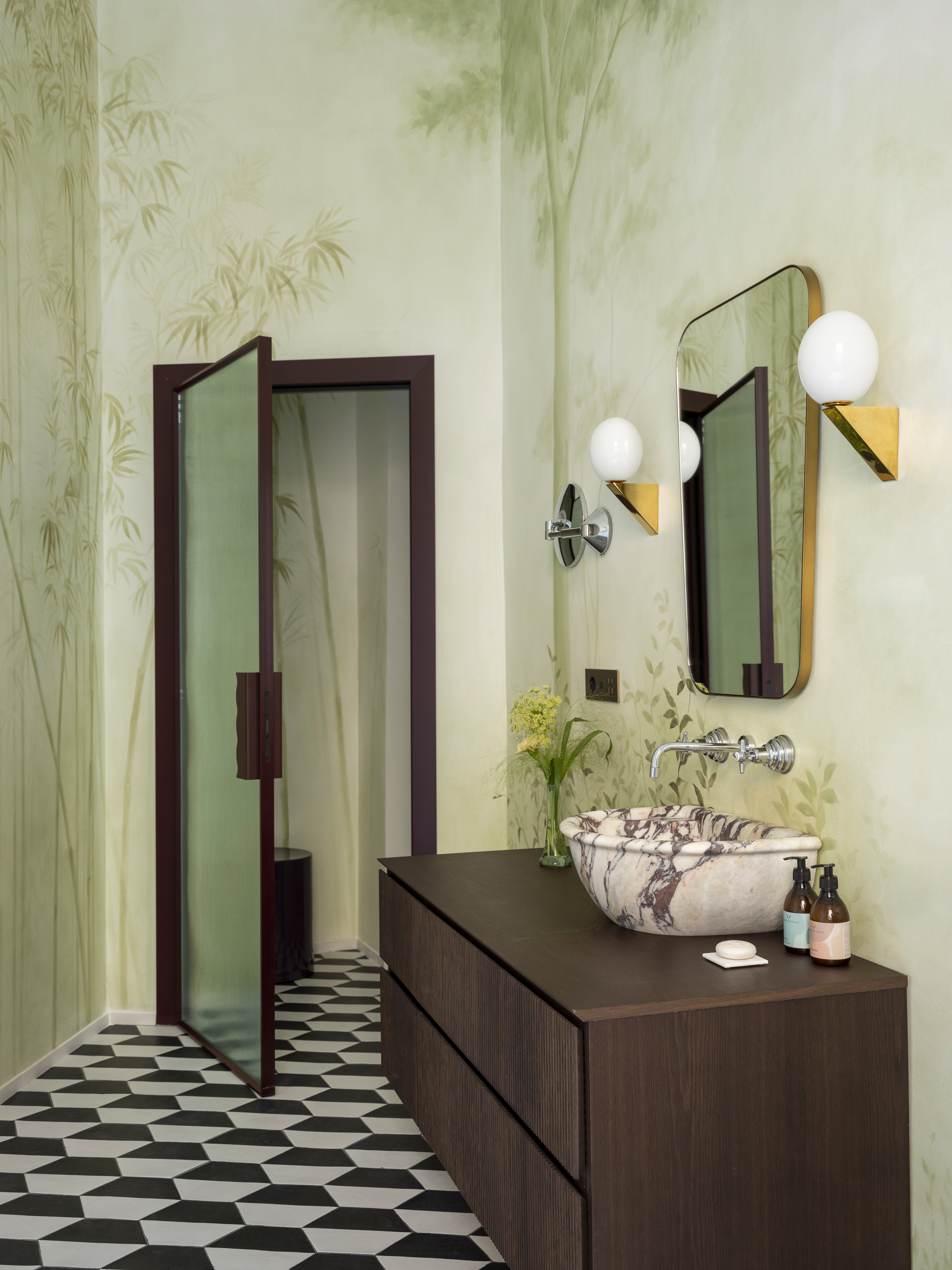
Inside the rooms, the full breadth of contemporary artistry comes to the fore. Custom-made headboards and tapestries, crafty ceramics, and unique framed prints exclusively sourced for Palazzo Talìa from late fine-art photographer Elisabetta Catalano's archive infuse them with a sophisticated, warm domestic feel. The hotel's wall art selection varies from suite to suite. Portraying the faces of notable image-makers and artists or depicting fascinating folkloric traditions and natural scenes, the personalized creative curation adds to the quirkiness and character of the stay without ever taking away from its modern, practical, and comfortable essence.
Eccentric 'boxy' coffee tables, plush velvety armchairs, and glamorous retro home bars in wood and gold can be found in most suites co-authored by MIA Home Design Gallery and Laura Feroldi Studio, with Art Deco design sconces, mesmerizing tiled surfaces, and marble-sculpted sinks making each of them into a craftsmanship masterpiece. An example? One of Santaniello's favorite rooms, a Junior Suite, "boasts hand-painted wallpaper developed on-site by Milanese interior design studio PictaLab", whose foliage-inspired installation blurs the boundaries between the inside and the outdoors.
Situated on the piano nobile ("noble floor") at the end of a colossal staircase, my room (another Junior Suite) "used to be the headmaster's office," the Operations Manager tells me. Nestled on the right-end side of a breathtakingly lit corridor dotted with statuesque busts, at the end of which is the Aula Magna, it has direct access to the balcony seen from Palazzo Talìa's entrance. Stylish, spacious, and bright, the suite references the color scheme of the stay in its décor accents, otherwise standing out as a sublime exercise in wood-drenching. Back in the day, "each room on this level was a classroom," says Santaniello. While the grandeur of the floor makes it hard to believe, I can still picture the students' revelry as they spring out of their doors after class.
Tramae: A Taste of Italy
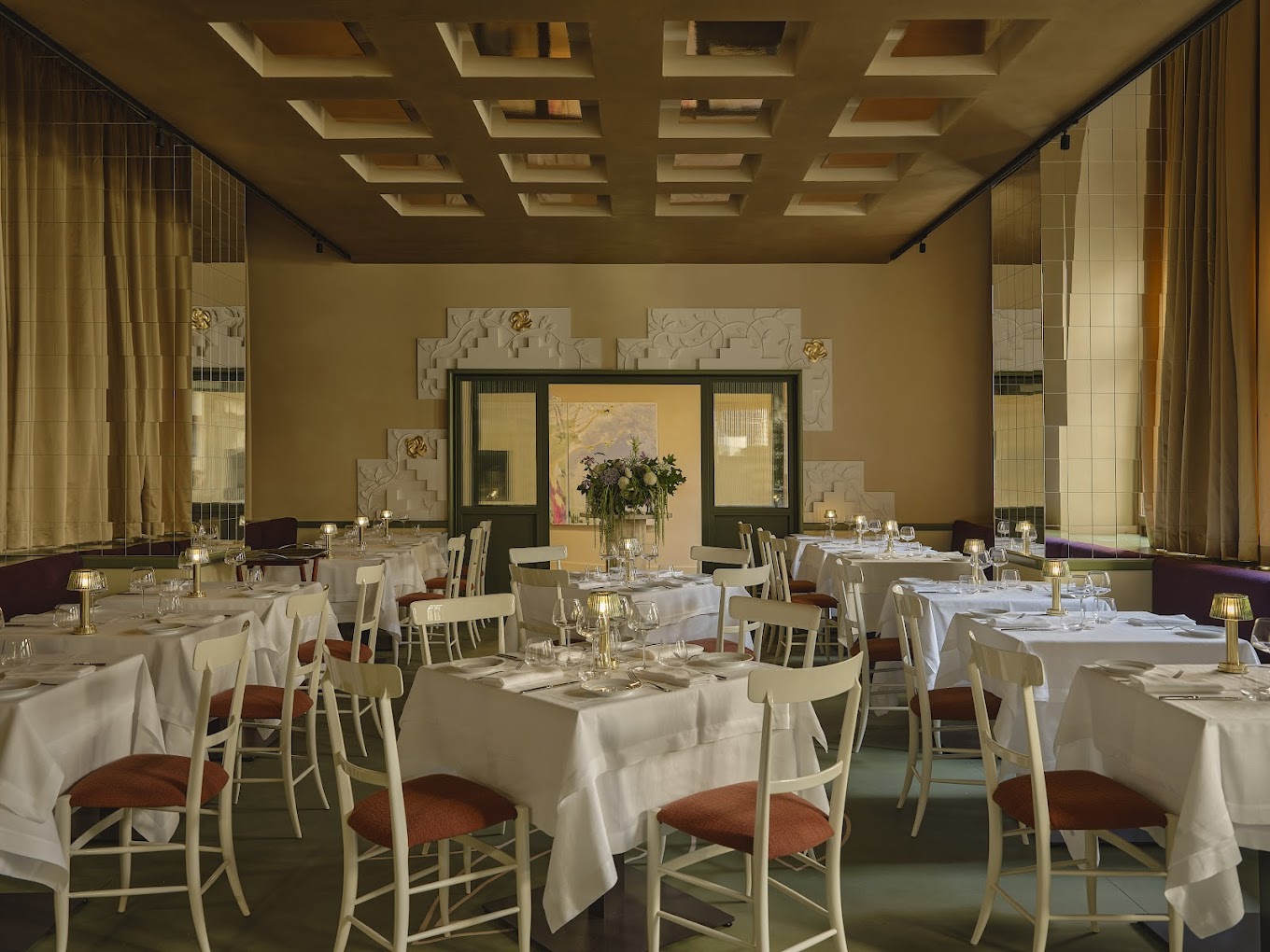

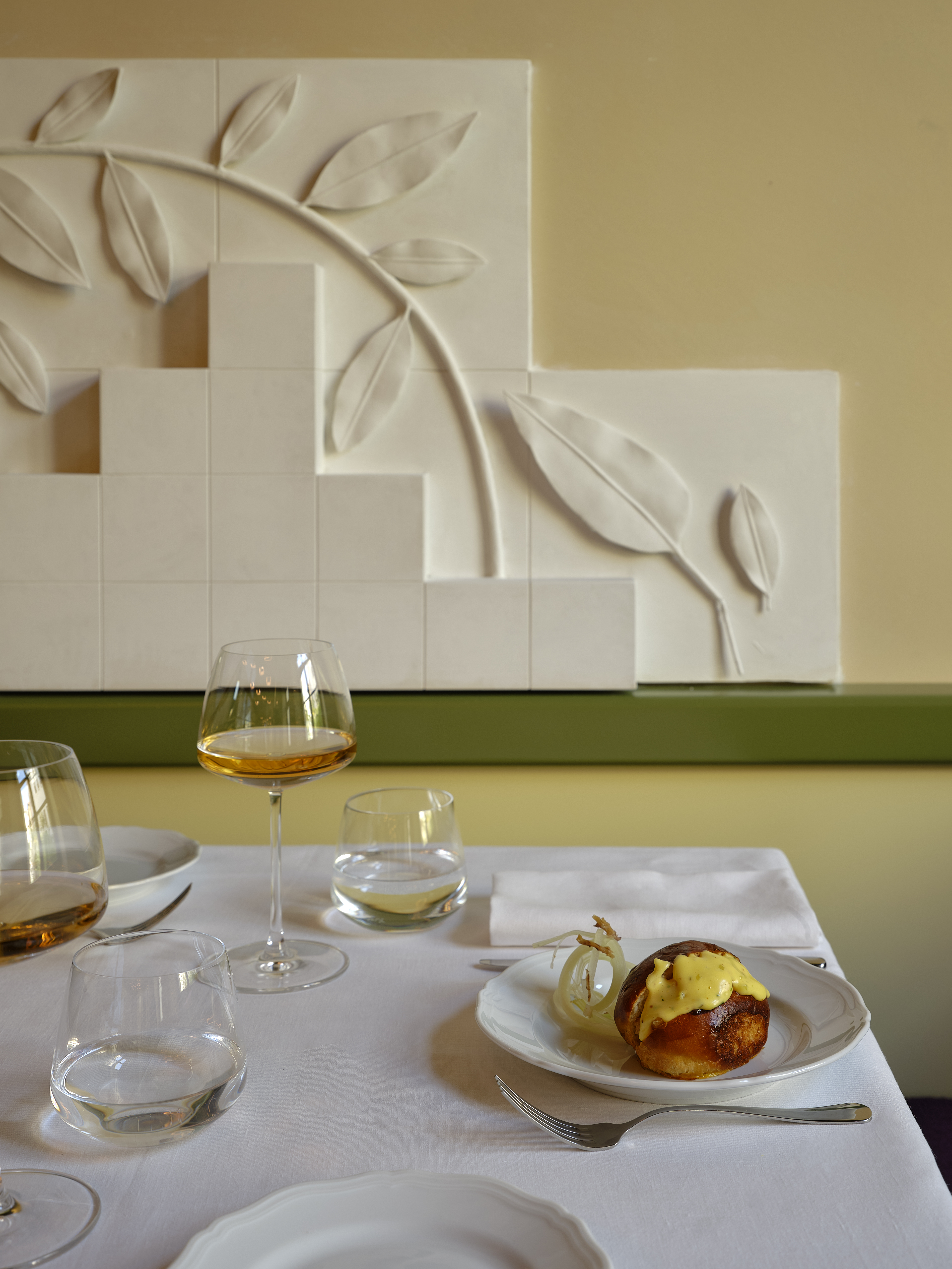
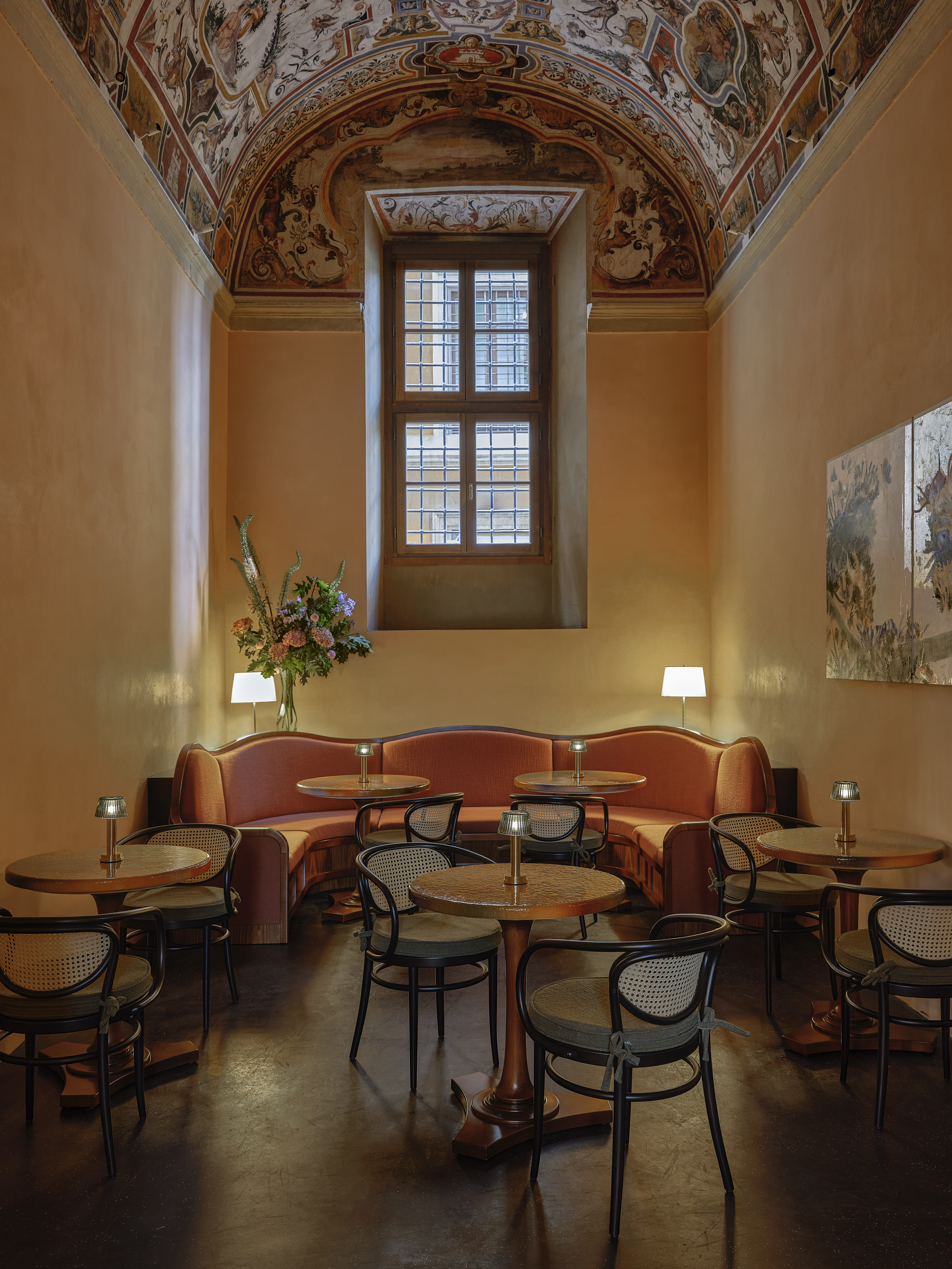
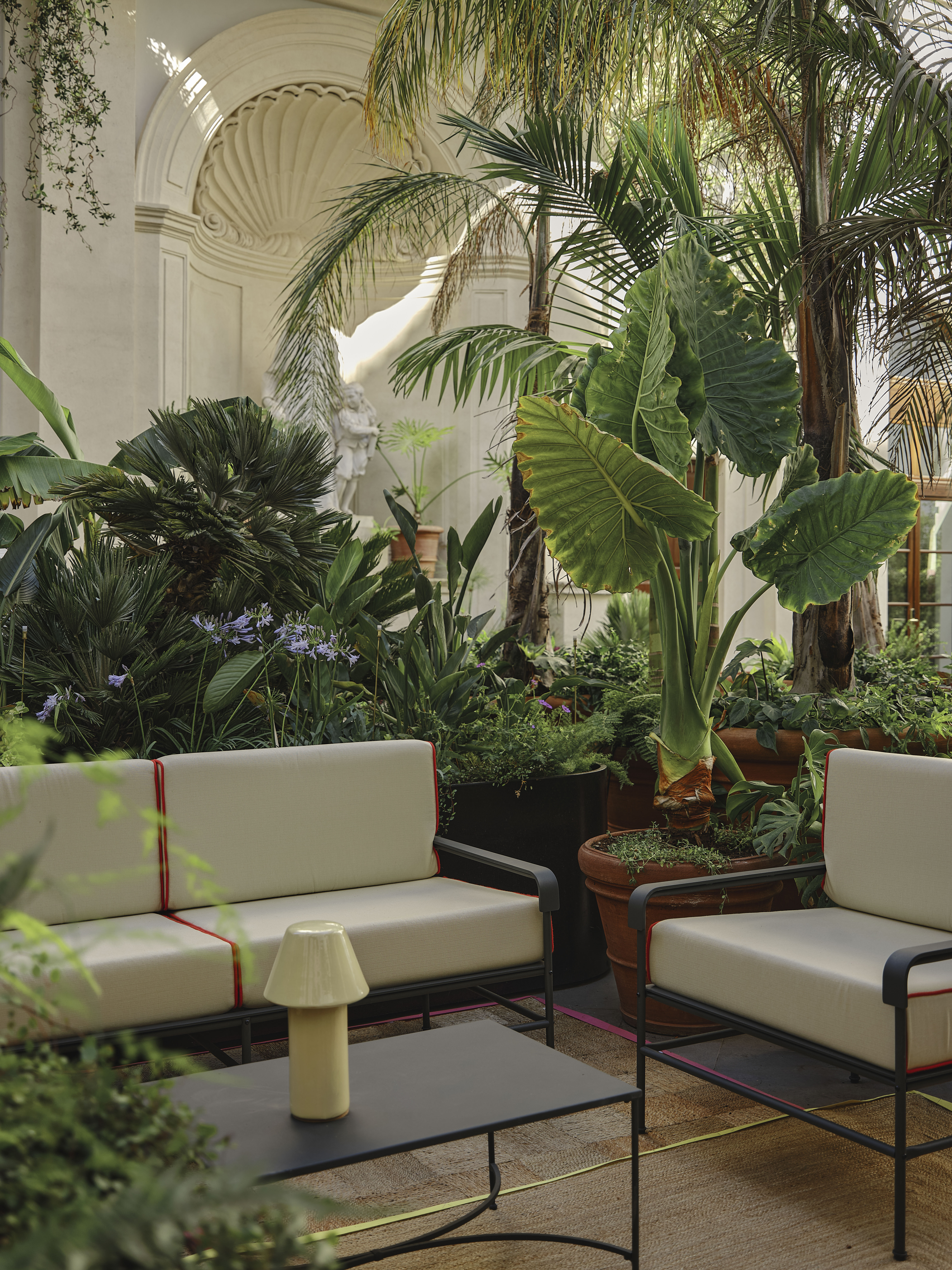
At Tramae, the hotel's restaurant, Sorrento-born Chef Marco Coppola translates the stuck-in-time atmosphere of the eatery into a nostalgic menu that celebrates the best of the Italian culinary tradition. Among the vintage-inspired mirrored walls and ceilings of the studiolucaguadagnino-designed dining room, the freshest seasonal ingredients are combined into elevated reinterpretations of Il Bel Paese's ultimate staples — from handmade ravioli and lemon risotto to vitello tonnato ("veal with tuna sauce") and fritto misto ("fried seafood"). Coppola's stock-in-trade, the basil and zucchini-led, creamy Spaghettone alla Nerano, is as simple as it is delicious, and the carpaccio di pescato del giorno ("catch-of-the-day carpaccio") is the most moreish entree I have ever ordered — you'll only want more.
Move to the nearby Bar della Musa to enjoy Tramae's fragrant chocolate and almond Caprese cake and a life-enhancing espresso, or finish off the meal with a zingy cocktail created by the in-house mixologist. Awaiting in its two main rooms (technically, there are three, with the third situated just before the door to Tramae) are elegant wood and rattan chairs and lava stone-topped round tables offering an Italian take on the modern bistro. In the first one, positioned nearest the stay's lobby, a semi-circular, wavy upholstered banquette steals the show, surrounded by plastered muted yellow walls and the fantastical grottesche ("grotesque art paintings") of its ceilings. In the second one, closest to Tramae, the building's original frescoes are projected across the space by the reflective tiles that, delineated by 'Smarties'-like colorful drops (yes, "that's what Guadagnino himself calls them," assures Hotel Manager Michela De Martino), surround a just-as-striking bar counter. Similarly to the Challengers and Queer director's film production, the result is as deeply disorienting as it is captivating.
Restoring the Palace, Rekindling the Myth
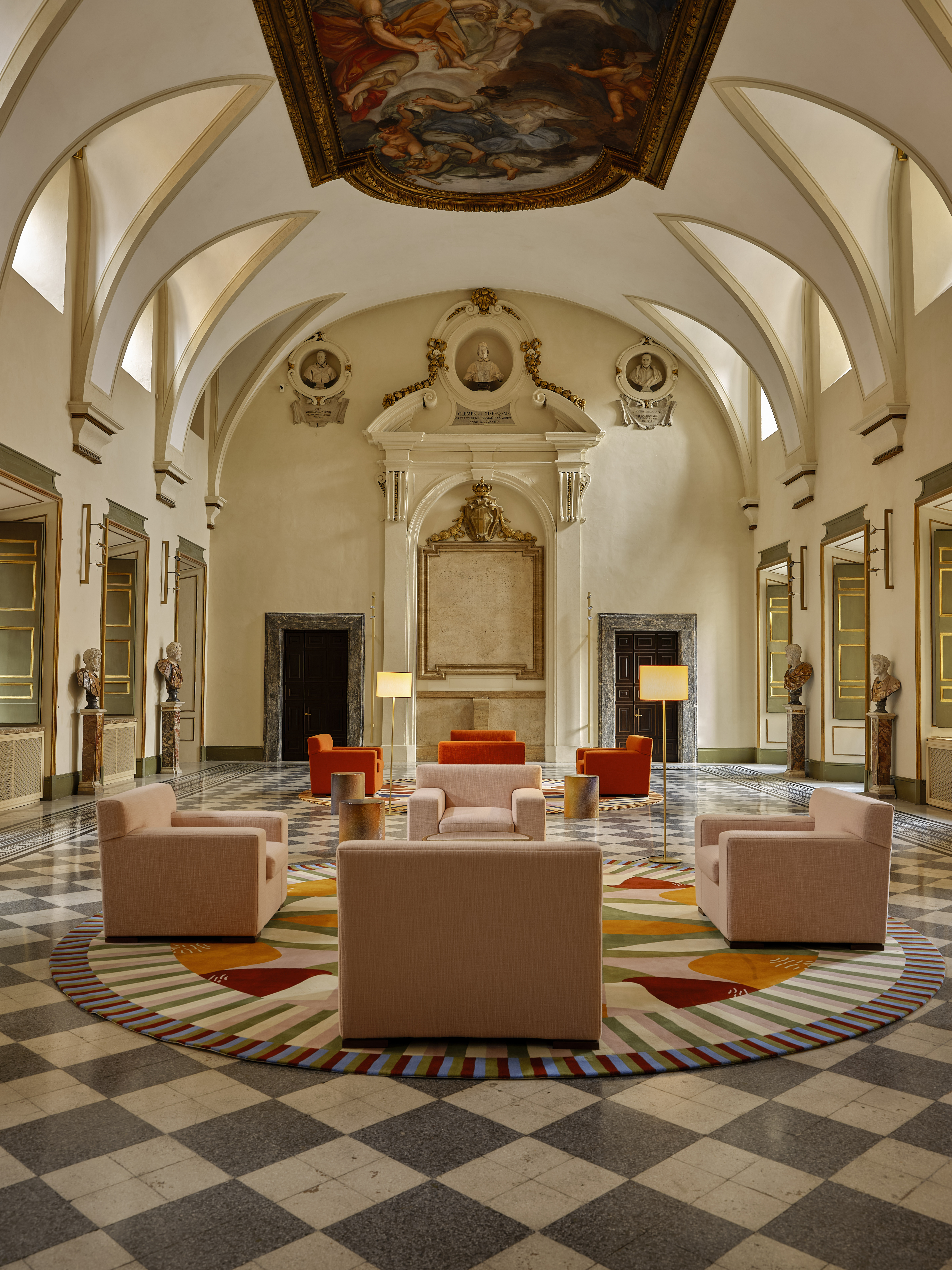
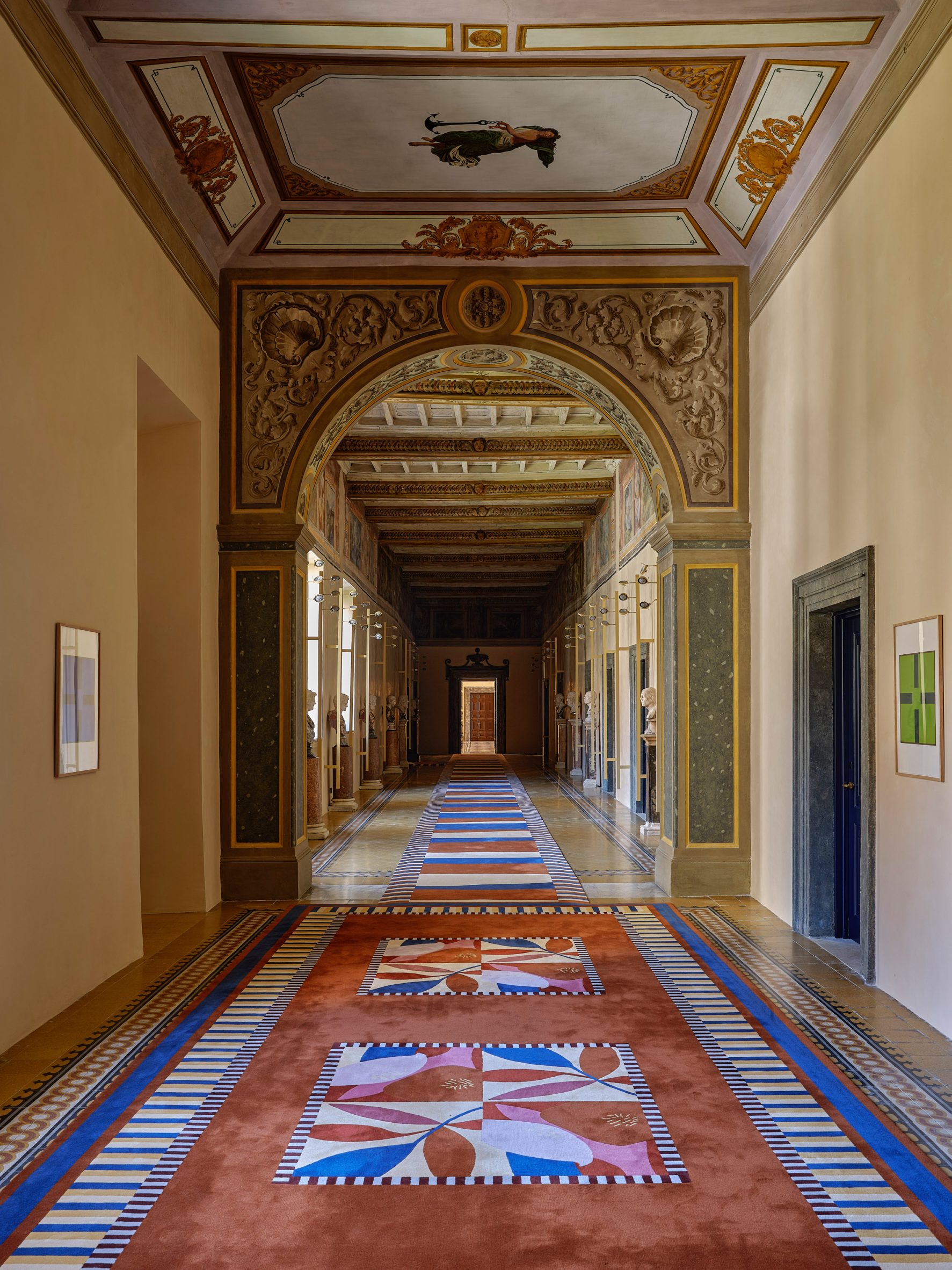
As I take another bite of my dessert, I feel a strange sensory overload. Not knowing where to look at first, I spend minutes tracing the shadows and reflections that appear on the walls, totally entranced.
"Talìa is one of the nine muses," reads a notebook I find on the bedside table of my hotel room when I eventually get back to it. "Presiding over the art of comedy, she moves with the grace of irony, with the elegance of one who doesn't take herself too seriously. The perfect synthesis of the Roman spirit, poised between the erotic comedy of the Satyricon, and the scathing sarcasm of Belli's poems, this is her Palace."
If anything, now I know who bewitched me.
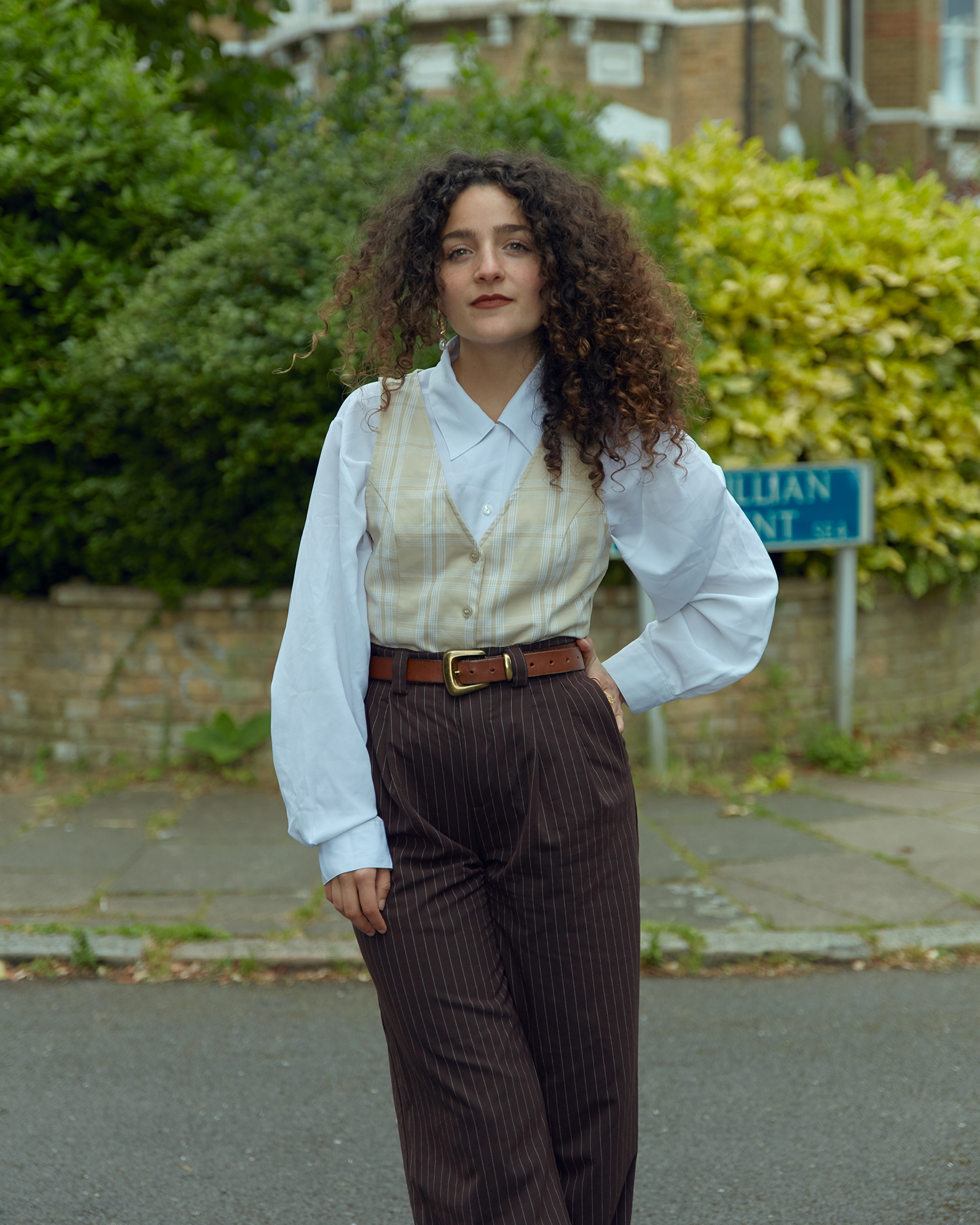
Gilda Bruno is Livingetc's Lifestyle Editor. Before joining the team, she worked as an Editorial Assistant on the print edition of AnOther Magazine and as a freelance Sub-Editor on the Life & Arts desk of the Financial Times. Between 2020 and today, Gilda's arts and culture writing has appeared in a number of books and publications including Apartamento’s Liguria: Recipes & Wanderings Along the Italian Riviera, Sam Wright’s debut monograph The City of the Sun, The British Journal of Photography, DAZED, Document Journal, Elephant, The Face, Family Style, Foam, Il Giornale dell’Arte, HUCK, Hunger, i-D, PAPER, Re-Edition, VICE, Vogue Italia, and WePresent.